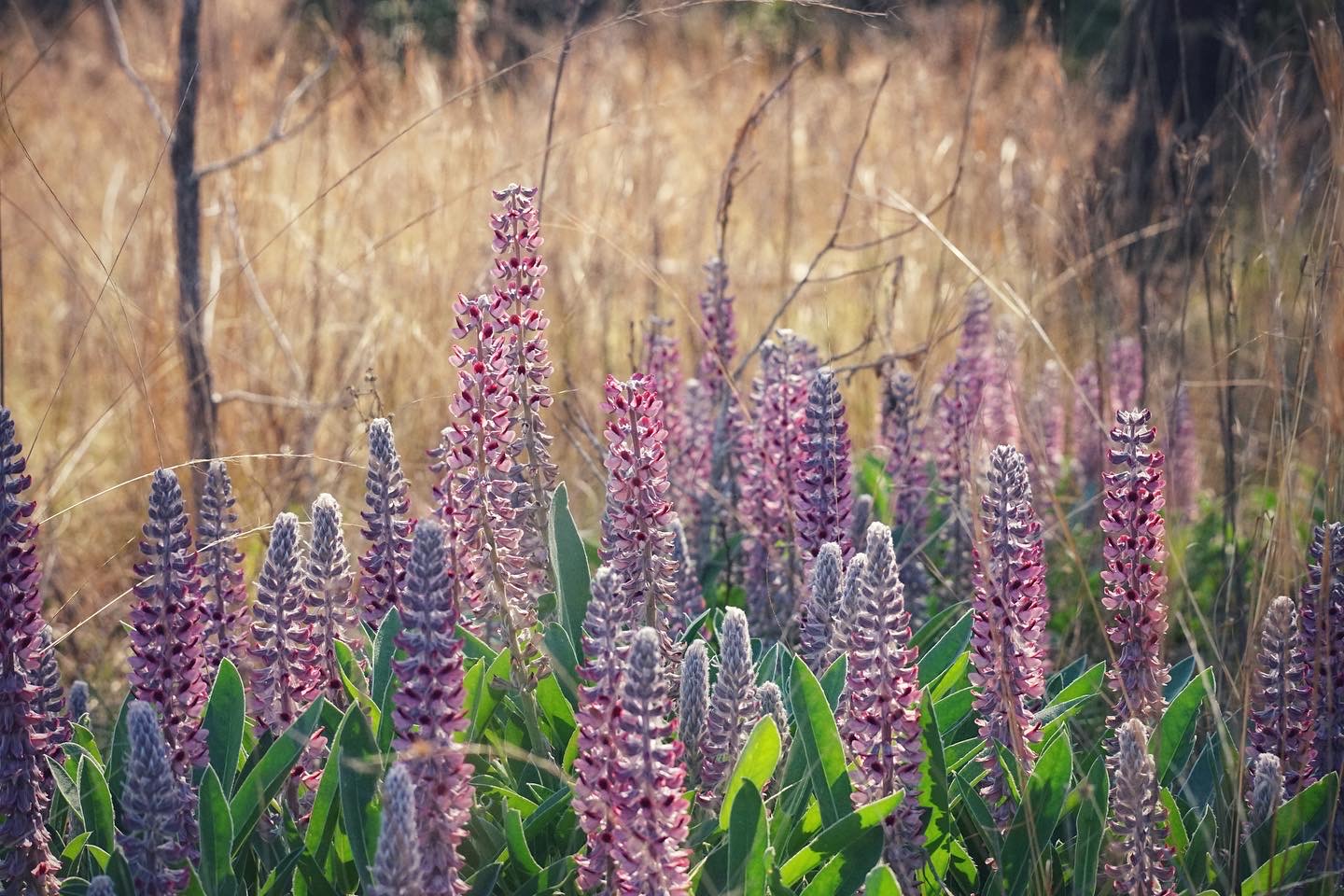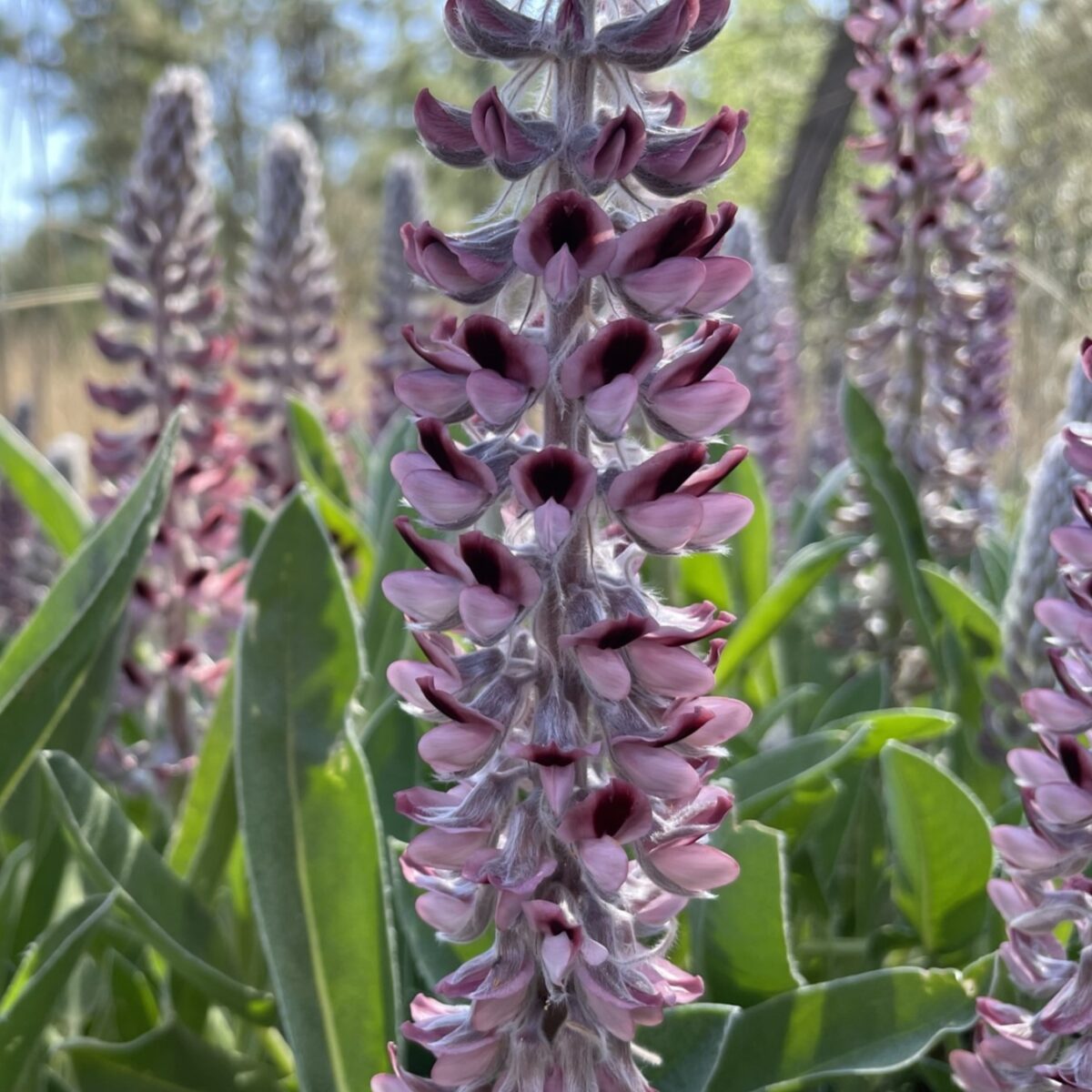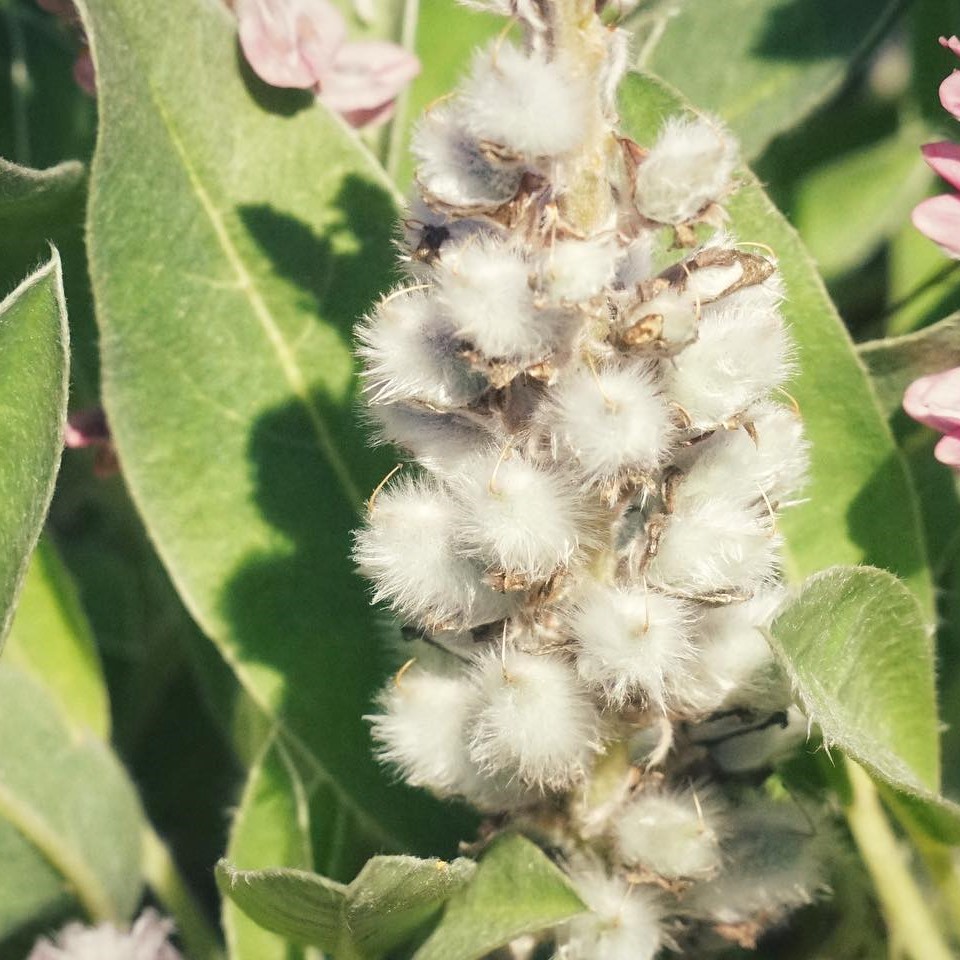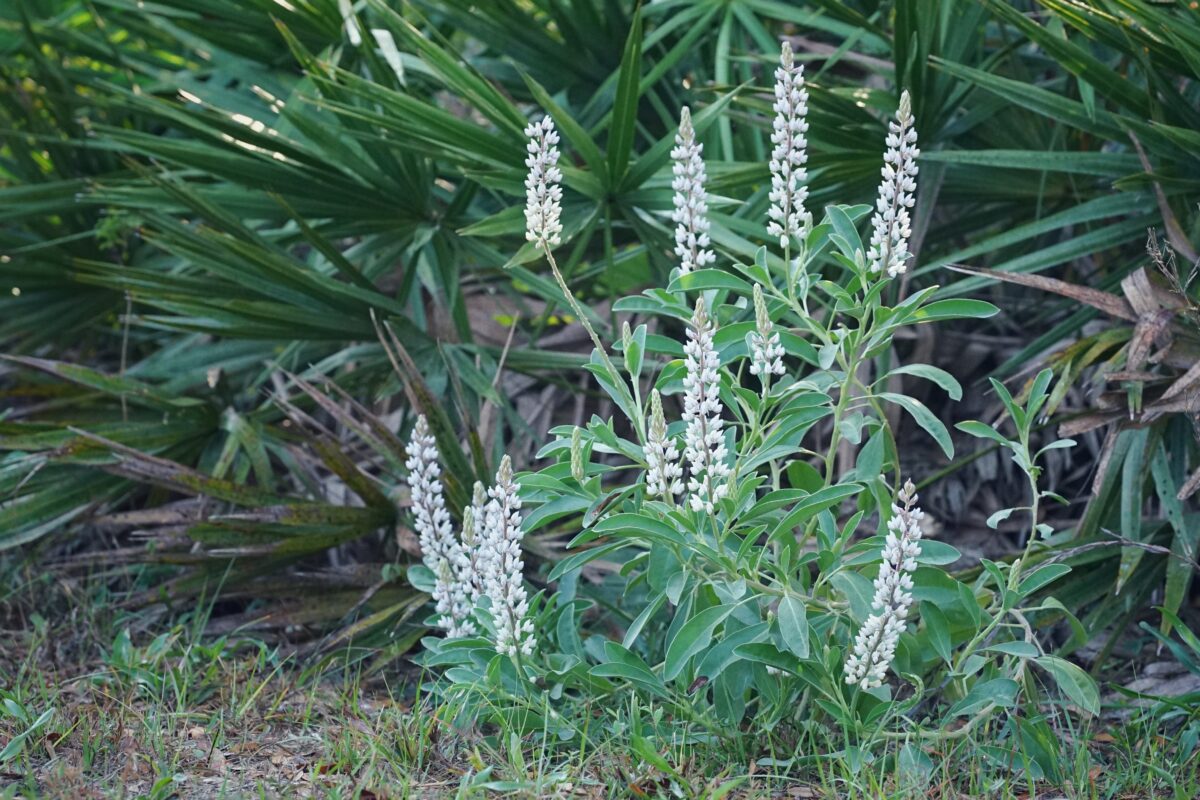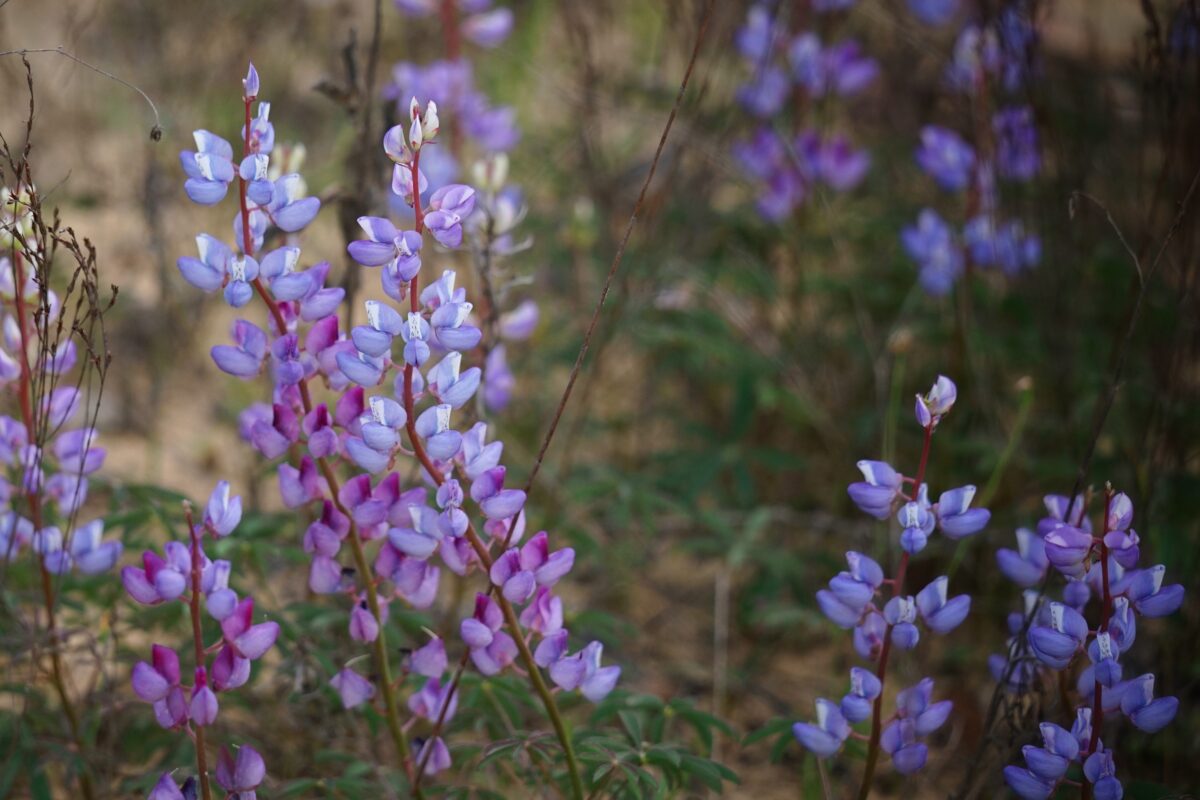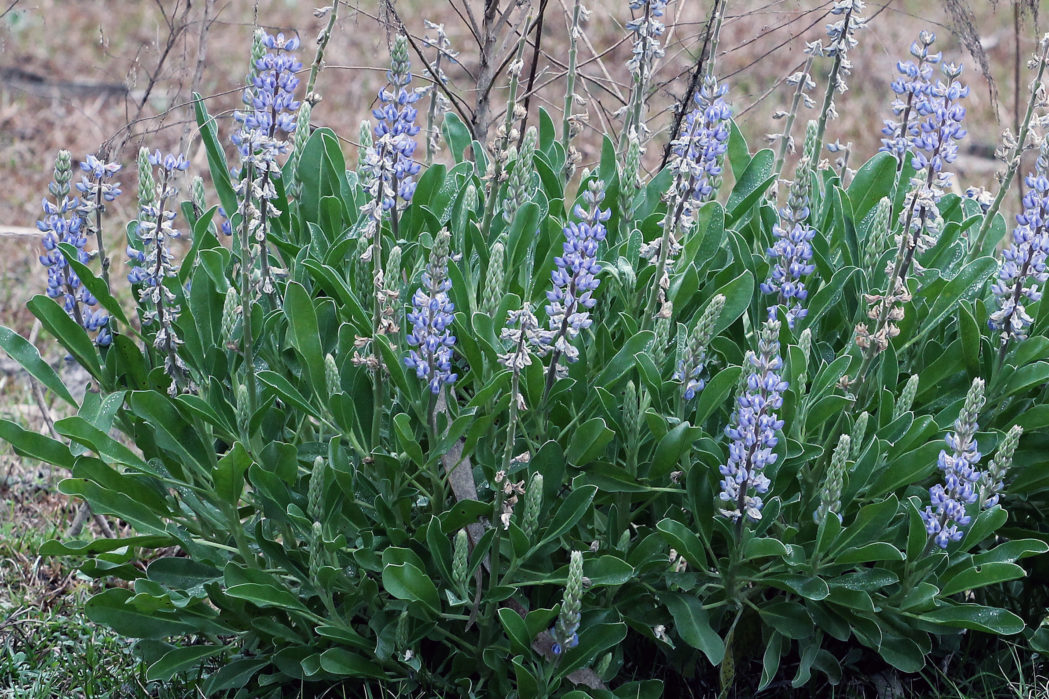Lady lupine
Pictured above: Lady lupine (Lupinus villosus) by Emily Bell. Click on terms for botanical definitions. View post as a PDF.
Lady lupine (Lupinus villosus) is a stunning spring bloomer endemic to the Southeastern Coastal Plain from North Carolina to southeastern Louisiana. It thrives in the deep, well-drained sandy soils of sandhill habitats. Its flowers are attractive to butterflies and hummingbirds.
Lady lupine is an herbaceous perennial with a broad spreading habit. Its leaves are elliptical to lanceolate and alternately arranged. The leaves, stems and flowers are all densely covered in silvery hairs. The flowers are born on crowded spikes and have a broad upper petal and two lower petals that are fused. They are bluish to light purplish or pink with a deep maroon spot on the upper petal.
Due to both a deep sensitive taproot and a reliance on symbiotic bacteria found in the soil of its natural habitat, Lady lupine is not easily cultivated. Even when seeds are successfully germinated, plants do not typically succeed in altered landscape environments.
Family: Fabaceae (Legume, bean or pea family)
Native range: North Florida
To see where natural populations of Sundial lupine have been vouchered, visit florida.plantatlas.usf.edu.
Lifespan: Perennial
Soil: Well-drained sand
Exposure: Full sun
Growth habit: Up to 2 feet tall and spreading
Lady lupine plants are not commercially available. Visit a natural area to see them.
For more information on other Lupinus species, see these resources:

